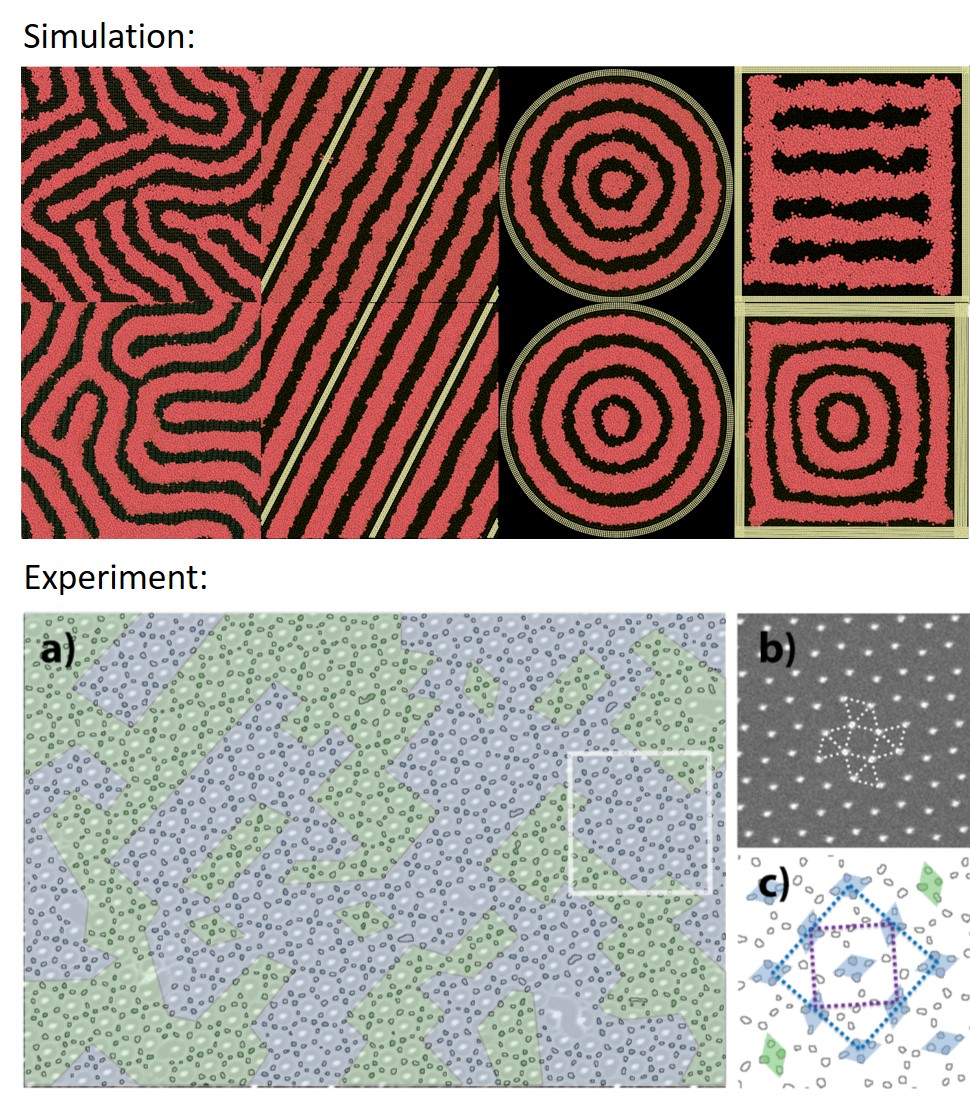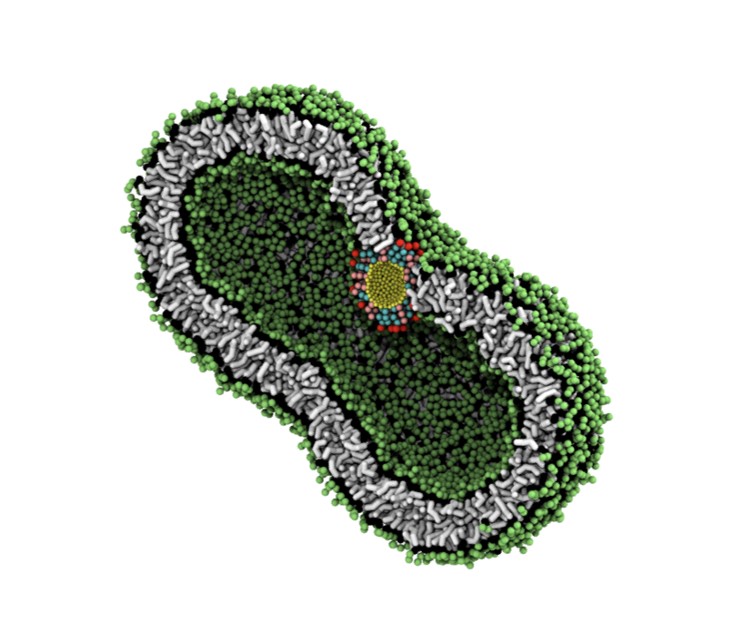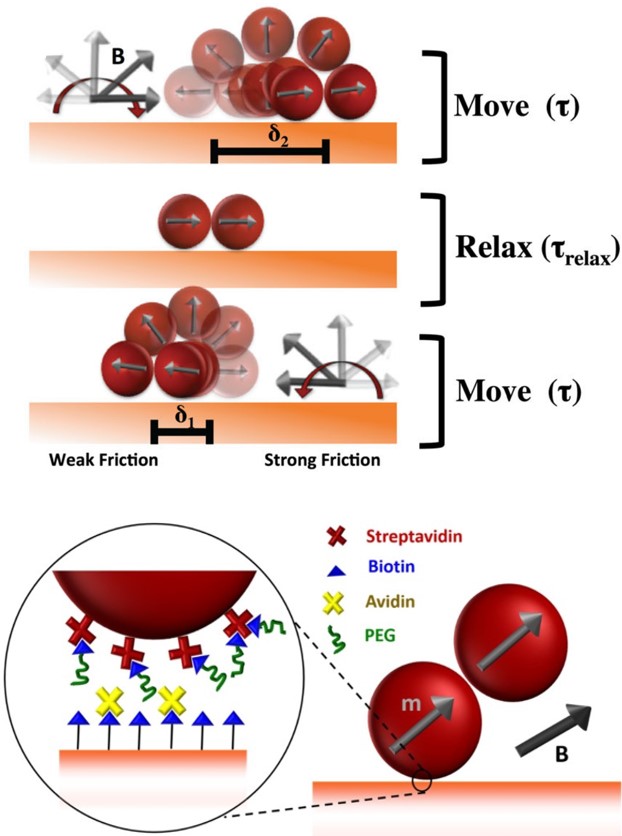 Back to main page
Back to main page
Self-Assembly of Soft Matter

Self-assembly is a process where molecules and nanoparticles self-organize into an ordered system due to local interaction. It provides an efficient and cost-effective way to fabricate complex nanostructures with long range order. In our work, we utilize simulation tools such as dissipative particle dynamics (DPD) and self-consistent field theoretic simulations (SCFT) to study the enthalpic and entropic effects in a self-assembled structures. In combination with experiment, it enables us to design novel 3D self-assembled nanostructures with approximately 10nm feature sizes.
Selected Publications:
Emergent symmetries in block copolymer epitaxy
Y Ding, KR Gadelrab, KM Rodriguez, H Huang, CA Ross and A Alexander-Katz
Nature communications 10 (1), 1-7 (2019)
Dissipative particle dynamics for directed self-assembly of block copolymers
H Huang and A Alexander-Katz
The Journal of chemical physics 151 (15), 154905 (2019)
Limits of Directed Self-Assembly in Block Copolymers
Karim R Gadelrab, Yi Ding, Ricardo Pablo-Pedro, Hsieh Chen, Kevin W Gotrik, David G Tempel, Caroline A Ross, Alfredo Alexander-Katz
Nano letters 18 (6), 3766-3772, 1-7 (2018)
Bio-Inspired Soft Matter
Various bio-materials with distinct molecular designs and complex functions are found in nature. We simulate these biological systems and systems inspired by them using tools, such as molecular dynamics (MD), to understand their behavior. The information we gain from these simulations enable us to design new bio-inspired materials, inform experiments, and understand the fundamentals at play in natural systems.
Selected Publications:
Behavior of Protein-Inspired Synthetic Random Heteropolymers
SL Hilburg, Z Ruan, T Xu, A Alexander-Katz
Macromolecules 53 (21), 9187-9199 (2020)
Computational Insights Into Avidity of Polymeric Multivalent Binders
E Zumbro, J Witten, A Alexander-Katz
Biophysical Journal 117, 892–902 (2019)
Random copolymers that protect proteins
A Alexander-Katz, RC Van Lehn
Science 359 (6381), 1216-1217 (2018)
Grafting charged species to membrane-embedded scaffolds dramatically increases the rate of bilayer flipping
RC Van Lehn, A Alexander-Katz
ACS central science 3 (3), 186-195 (2017)

Non-Equilibrium Active Soft Matter

An experimental artificial model of an active matter system has been developed by the group utilizing magnetically driven particles as the active unit or agent. An external rotating magnetic field induces various modes of motility. The mode of motility, frequency of rotating fields, and magnitude of magnetic field can be changed instantaneously, enabling the model to mimic chemotaxis. By functionalizing the active components with biological ligands and the surface with corresponding receptors, the effective friction induced by binding is leveraged to achieve directed motion and examine binding affinity of the interaction.
In combination with theory and simulation, the experimental model has been used to gain fundamental physical understanding of the principles contributing to emergent non-equilibrium behavior observed in many biological systems.
Selected Publications:
Aggregation dynamics of active rotating particles in dense passive media
JL Aragones, JP Steimel, A Alexander-Katz
Soft matter 15 (19), 3929-3937 (2019)
Emergent ultra–long-range interactions between active particles in hybrid active–inactive systems
JP Steimel, JL Aragones, H Hu, N Qureshi, A Alexander-Katz
Proceedings of the National Academy of Sciences 113 (17), 4652-465 (2016)
Elasticity-induced force reversal between active spinning particles in dense passive media
JL Aragones, JP Steimel, A Alexander-Katz
Nature communications 7, 11325 (2016)
